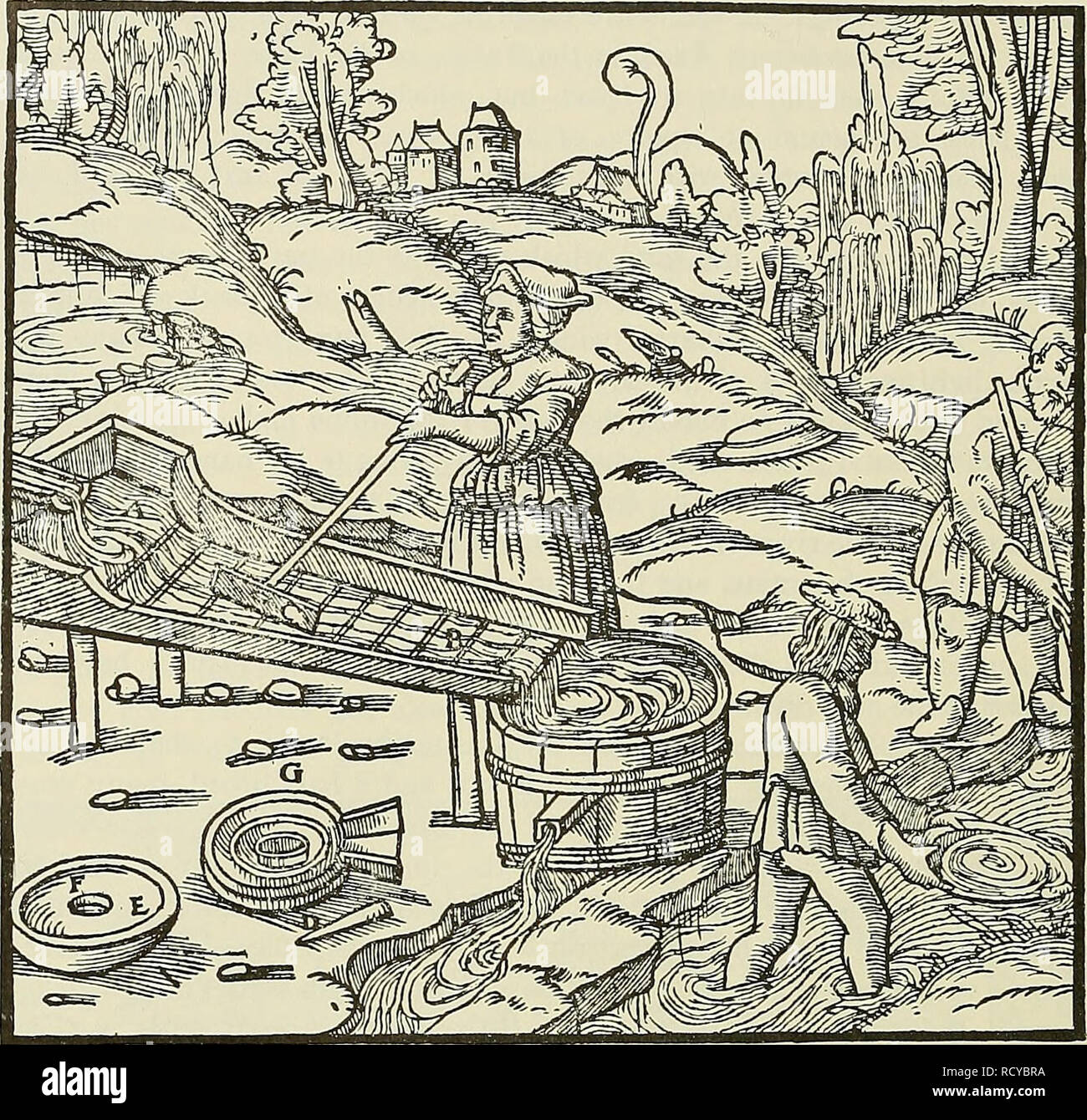. De re metallica. Metallurgy; Mineral industries. 326 BOOK VIII. -Head of the sluice. E—Dish. F- B- •Its -Riffles. C—Wooden scrubber. D—Pointed stick, cup-like depression. g—grooved dish. The cup-like pockets and grooves are cut or burned at the same time into the bottom of the sluice ; the bottom is composed of three planks ten feet long, and is about four feet wide ; but the lower end, through which the water is discharged, is narrower. This sluice, which Ukewise has side-boards fixed to its edges, is full of rounded pockets and of grooves which lead to them, there being two grooves to one

Image details
Contributor:
Paul Fearn / Alamy Stock PhotoImage ID:
RCYBRAFile size:
7.1 MB (739.3 KB Compressed download)Releases:
Model - no | Property - noDo I need a release?Dimensions:
1612 x 1550 px | 27.3 x 26.2 cm | 10.7 x 10.3 inches | 150dpiMore information:
This image is a public domain image, which means either that copyright has expired in the image or the copyright holder has waived their copyright. Alamy charges you a fee for access to the high resolution copy of the image.
This image could have imperfections as it’s either historical or reportage.
. De re metallica. Metallurgy; Mineral industries. 326 BOOK VIII. -Head of the sluice. E—Dish. F- B- •Its -Riffles. C—Wooden scrubber. D—Pointed stick, cup-like depression. g—grooved dish. The cup-like pockets and grooves are cut or burned at the same time into the bottom of the sluice ; the bottom is composed of three planks ten feet long, and is about four feet wide ; but the lower end, through which the water is discharged, is narrower. This sluice, which Ukewise has side-boards fixed to its edges, is full of rounded pockets and of grooves which lead to them, there being two grooves to one pocket, in order that the water mixed with sand may flow into each pocket through the upper groove, and that after the sand has partly settled, the water may again flow out through the lower groove. The sluice is set in the river or stream or on the bank, and placed on two stools, of which the first is higher than the second in order that the gravel and small stones may roll down the sluice. The washer throws sand into the head with a shovel, and opening the launder, lets in the water, which carries the particles of metal with a little sand down into the pockets, while the gravel and smaU stones with the rest of the sand falls into a tub placed below the sluice. As soon as the pockets are filled, he brushes out the concentrates and washes them in a bowl. He washes again and again through this sluice.. Please note that these images are extracted from scanned page images that may have been digitally enhanced for readability - coloration and appearance of these illustrations may not perfectly resemble the original work.. Agricola, Georg, 1494-1555; Hoover, Herbert, 1874-1964. New York, Dover Publications